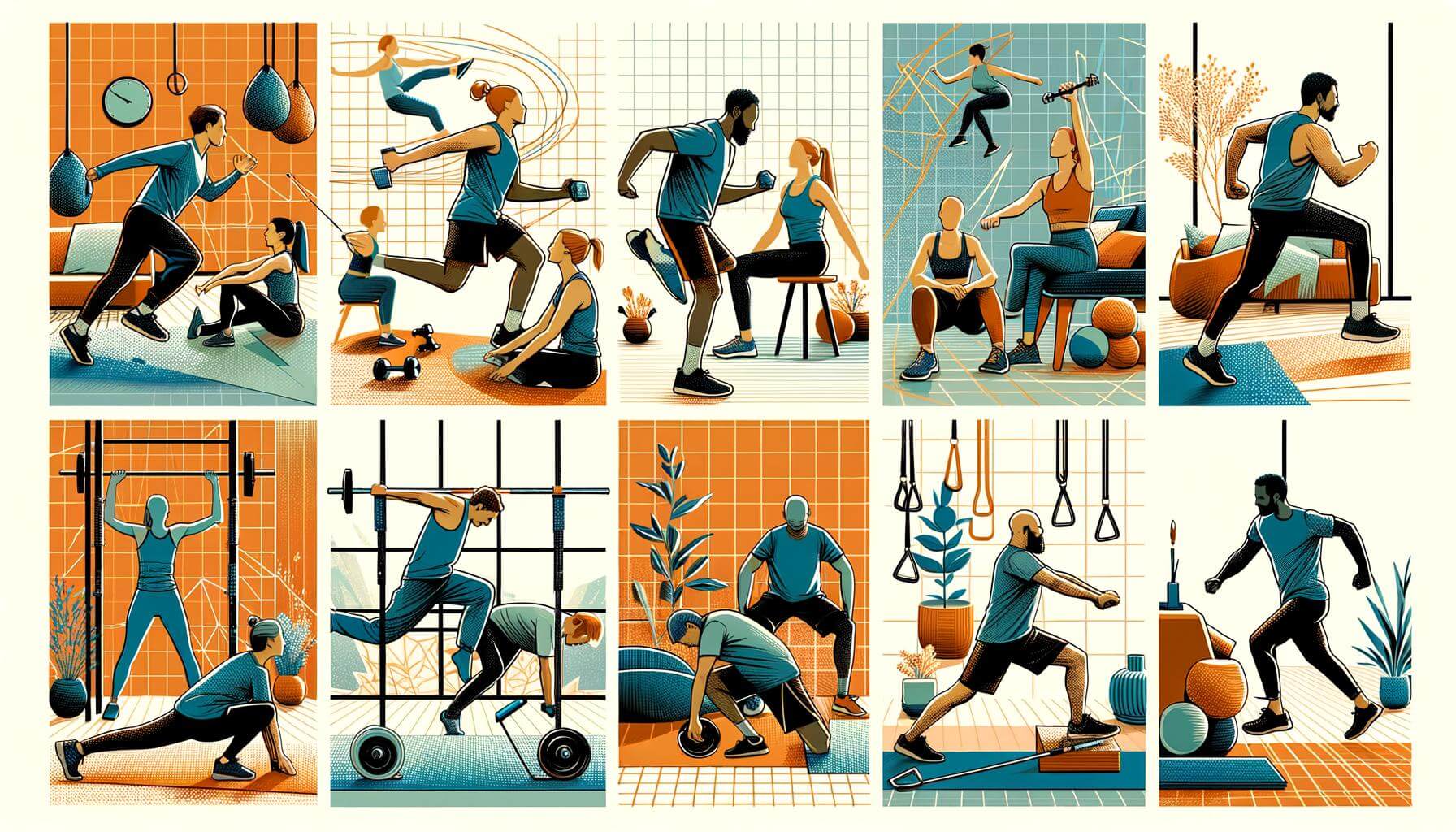
Mastering the Perfect Squat: How to Improve Your Technique
The squat is one of the most effective exercises for building lower body strength and overall fitness. However, many people struggle with their squat technique, which can lead to injury or suboptimal results. In this article, we will discuss how to improve your squat technique to maximize the benefits of this powerful exercise.
Understanding the Squat
Before we dive into the specifics of squat technique, it’s important to understand the basic mechanics of the squat. The squat is a compound exercise that works multiple muscle groups, including the quadriceps, hamstrings, glutes, and core. It also requires a strong foundation of stability and mobility in the hips, knees, and ankles.
Proper squat technique involves maintaining a neutral spine, keeping the knees in line with the toes, and achieving adequate depth without compromising form. To improve your squat technique, you need to address any limitations in mobility, strengthen key muscle groups, and refine your movement patterns.
Evaluating Your Technique
Before you can improve your squat technique, you need to assess your current form. Stand with your feet shoulder-width apart and toes slightly turned out. Lower yourself into a squat, paying attention to the following elements:
- Spinal Alignment: Keep your spine straight and chest up, avoiding excessive rounding or arching of the back.
- Knee Position: Your knees should track in line with your toes, without collapsing inward or excessively splaying out.
- Depth: Aim to lower your hips below parallel, while maintaining good alignment and control.
- Foot Stability: Ensure that your weight is distributed evenly across your feet, with your heels planted on the ground.
Once you have a clear understanding of your current squat technique, you can begin to address any areas of weakness or restriction.
Improving Mobility
Mobility plays a crucial role in achieving proper squat technique. If you struggle to achieve adequate depth or experience discomfort in your squat, it’s likely that you have restrictions in hip, knee, or ankle mobility. To improve your mobility for squats, incorporate the following exercises into your routine:
- Hip Flexor Stretch: Kneel on one knee and lunge forward, feeling a stretch in the front of your hip. Hold for 30 seconds on each side.
- Calf Stretch: Stand facing a wall with one foot back, pressing the heel into the ground to stretch the calf. Hold for 30 seconds on each leg.
- Ankle Mobility Drill: Sit on the ground with your legs straight out in front of you. Point and flex your feet, then rotate them in circles to improve ankle mobility.
By addressing mobility restrictions, you will be able to move more freely and comfortably in the squat, which is essential for optimal technique.
Strengthening Key Muscle Groups
In addition to improving mobility, strengthening key muscle groups will enhance your squat technique. The quadriceps, hamstrings, glutes, and core all play important roles in stabilizing and powering the squat movement. Incorporate the following exercises into your workout routine to strengthen these muscles:
- Front Squats: This variation of the squat places greater emphasis on the quadriceps, challenging them to work harder to maintain an upright torso.
- Romanian Deadlifts: This exercise targets the hamstrings and glutes, improving hip hinging and posterior chain strength.
- Planks and Pallof Press: These core exercises will help you develop the stability and control necessary for a strong squat.
By targeting these key muscle groups, you will build the strength and stability needed to perform a technically sound squat.
Refining Your Movement Patterns
Once you have addressed mobility and strength, it’s time to refine your movement patterns to improve your squat technique. Pay close attention to the following cues as you perform your squats:
- Engage Your Core: Brace your core muscles as if you were about to be punched in the stomach, maintaining this tension throughout the movement.
- Control Your Descent: Lower yourself into the squat with control, rather than simply dropping down. This will help you maintain proper alignment and avoid undue stress on your joints.
- Drive Through Your Heels: As you stand up from the squat, focus on pushing through your heels to engage the posterior chain and maintain balance.
By consistently practicing these movement patterns, you will develop a more efficient and effective squat technique.
Progressing Safely
As you work to improve your squat technique, it’s important to progress gradually and safely. Avoid loading the bar with excess weight before you have mastered the basics of squatting. Instead, focus on refining your technique and gradually increasing the resistance as your strength and proficiency improve.
Additionally, listen to your body and address any areas of discomfort or weakness that arise during your squat practice. This may involve consulting a fitness professional or physical therapist for guidance on injury prevention and rehabilitation.
Incorporating SuperBody App
For those looking to track their progress in the gym, access a library of exercises, and follow structured workout plans designed to improve squat technique, the SuperBody app is an excellent resource. With features such as progress tracking, exercise demonstrations, and customizable workouts, SuperBody can help individuals of all fitness levels enhance their squat technique and overall fitness.
In conclusion, mastering the perfect squat requires attention to detail, dedication to improving mobility and strength, and consistent practice of proper movement patterns. By focusing on these elements and utilizing resources like the SuperBody app, you can take your squat technique to the next level and reap the benefits of this transformative exercise. Remember, the perfect squat is within your reach – keep striving for improvement and enjoy the results.
